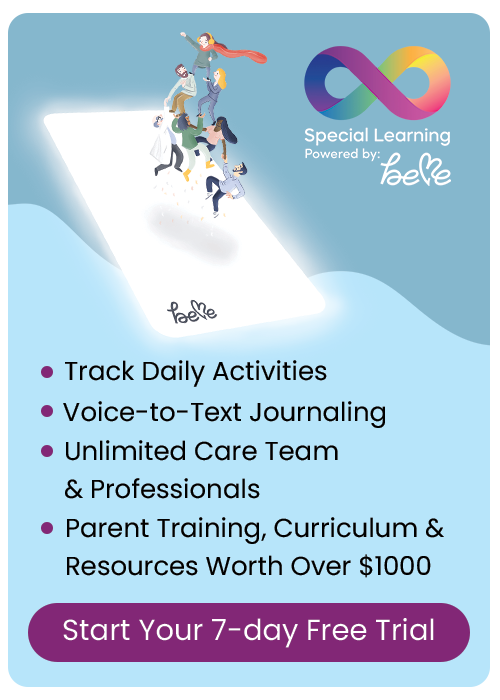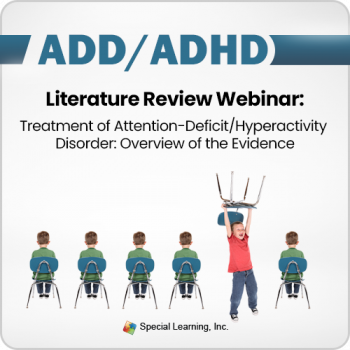Blog Categories
- ADHD
- Applied Behavior Analysis
- Autism Awareness
- Autism Service Providers
- Case Studies
- Dignosis
- Classroom Management
- Credentials
- Ethics
- Family Matters
- FAQs About LIVE Events
- Financial Planning
- Holiday Planning
- IEP's
- Panelists
- Private Equity in Autism & ABA Industry
- Psychopharmacology
- Sensory Processing Disorder
- Speech and Communication
- Subject Matter Experts
- Summer Planning
- Transition Planning
Intervention Strategies for Aggression: Hitting
Before that, she served as Training and Behavior Plan Supervisor, Outreach and Training Coordinator, Program Supervisor/Outreach Support Technician and Behavior Technician. During this time, she also moonlighted at Piece by Piece Consulting Services, a private consulting services firm specializing in behavioral treatment methods utilizing Applied Behavior Analysis (ABA) principles for children with Autism Spectrum Disorders as a
Behavior Consultant. At Step By Step, she is responsible for the hiring and training of all senior clinical staff members. In addition, she trains Clinic Directors on how to develop and monitor treatment and behavior plans, and teaches Clinical Assistants the principles of
ABA and monitoring procedures.
Christine regularly presents at professional conferences on topics related to autism and behavioral support. Her areas of expertise include ABA, training, Individual Education Plans (IEPs), treatment planning and behavior modification and behavior management. Additionally, she has developed autism training programs for professionals and families on a variety of topics, including ABA Principles and Procedures, The Picture Exchange Communication System, Token Economy Systems, The Maintenance and Generalization of Acquired Skills and Decreasing Challenging Behaviors.
She has a BA in Psychology and a minor in Sociology from The Ohio State University. She is a Board Certified Assistant Behavior Analyst (BCaBA) through the University of North Texas and is currently enrolled in the M.S. in ABA & Autism program at The Sage Colleges. She will graduate in the spring of 2012.
Intervention Strategies for Aggression: Hitting
Aggressive behavior is a common problem for many children with autism spectrum disorders (ASD). When a child engages in aggression towards others, there may be a need to create a more restrictive learning environment. Aggression serves as a barrier to the child’s ability to learn and sometimes, it may create an unsafe environment for adults attempting to teach the child. Additionally, it limits opportunities for the child to form meaningful social relationships with both adults and peers.
Neutral redirection is the most common response to aggressive behavior. Neutral redirection consists of stopping the child from engaging in the aggressive behavior and guiding him to perform a functionally-appropriate behavior (for example, a child who hits others as a means to gain attention may be neutrally redirected to appropriately tap another’s shoulder and say “excuse me” instead of hitting). While the adult implements neutral redirection, it is imperative that she refrains from talking to the child while he is engaging in the act of aggression (i.e., she refrains from reprimanding or scolding the child, or asking him to stop); that she refrains from making eye contact with the child, and from providing a physical reaction, such as flinching or scowling. For example, if a teacher asks a child to clean up his art project but he wants to continue working on his project and shows this by hitting the teacher, she can simply guide him to clean up his materials without looking at him or talking him through the task.
While neutral redirection is a common response to aggressive behavior, preventive measure should also be put in place. One such preventive measure is to provide the child praise and attention for appropriate behavior (i.e., “catch him being good”). In addition to rewarding appropriate behavior, keeping the child’s environment rich with preferred activities and providing the child the opportunity to choose the order of tasks he will complete may also prevent the occurrence of aggressive behavior. Finally, identifying what motivates a child and using items or activities that the child finds rewarding is an essential key to successful teaching.
Although each case is unique and should be addressed based upon its own merits, following a technique that can be used to deal with hitting.
Hitting
A common form of aggression displayed by children with autism is hitting. Hitting can range from slapping with an open hand to punching with a closed fist with extreme force, thereby causing injury ranging in degrees of severity (i.e. bruising, broken skin, fractured or broken bones, or concussions).
To effectively, neutrally redirect hitting behavior, the adult will prevent the child from making contact with her body by moving out of the child’s range of motion. When moving away from the child is not possible, the adult may need to protect the vulnerable parts of her body with her own hands or arms. After the adult has successfully avoided injury and the child has stopped aggressing, she will then guide him to engage in an appropriate task. Again, it is very important that the adult not react to the child with exaggerated body movement or with a change in facial expression.
If the adult knows of situations in which the child is most likely to hit her, it is important for her to be prepared for this possibility. Arranging the environment so that the child has fewer opportunities to hit is advisable; strategies include staying within an arm’s length of him, keeping him seated at a table for instruction, teaching from across the table outside his range of motion, and teaching from a standing position while he is seated. These techniques provide an adult the safest manner to avoid injury from hitting behavior without needing to physically intervene.
When the child is around other children, it is very important to monitor his interactions at all times. Because the sibling or peer will likely react to the child’s hitting behavior, it is important to teach them to excuse themselves from the child’s proximity immediately.
As in most cases, consultation with a trained Behavior Therapist is strongly recommended. A resource that can be used is Special Learning’s BCBA Directory: https://special-learning.com/bcba.
RECOMMENDED PRODUCTS
Historia Social “Pedir un descanso” Plan de Estudios
ADHD Literature Review Webinar: Treatment of Attention-Deficit/Hyperactivity Disorder: Overview of the Evidence (RECORDED)
Strategies to Increase Beginner Classroom Participation Skills: Decreasing Problem Behavior with an FBA Part 1: How to Begin






